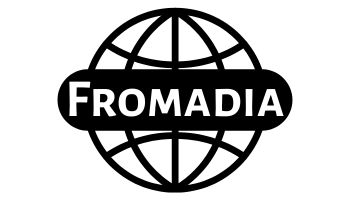Have you ever felt overwhelmed by the chaos of planning your day, week, or even life? Enter Plangud—a refreshing approach that promises to revolutionize how we organize and prioritize our tasks. This innovative concept blends structure with creativity, allowing individuals to navigate their daily responsibilities while embracing flexibility. Whether you’re a busy professional juggling meetings or a student managing assignments, understanding Plangud can unlock new levels of productivity. Dive into this ultimate guide as we explore everything from its origins to practical implementation strategies that will transform your planning game!
What is Plangud?
Plangud is more than just a planning system; it’s a mindset shift. At its core, Plangud emphasizes adaptability while maintaining structured organization. This unique concept allows individuals to plan their tasks in a way that aligns with their personal goals and values.
Unlike traditional methods that often feel rigid, Plangud encourages creativity within frameworks. It merges visual elements and interactive tools that help users engage deeply with their plans.
Imagine combining your daily to-do lists with mood boards or vision maps—this is the essence of Plangud. It promotes an intuitive approach, making planning not only effective but enjoyable.
By focusing on what truly matters, Plangud empowers users to prioritize tasks based on impact rather than mere obligation. This refreshing perspective invites everyone from students to professionals to rethink how they navigate their time and responsibilities.
The History of Plangud
Plangud has roots that trace back to a time when traditional planning methods began to feel inadequate. As the complexities of modern life increased, so did the need for more adaptable solutions.
Its origins can be linked to various experimental approaches in project management and collaborative strategies. Early adopters recognized that rigid structures often stifled creativity and flexibility.
Over time, Plangud evolved through contributions from diverse fields such as psychology, design thinking, and agile methodologies. This fusion created a dynamic framework capable of responding to rapid changes.
As technology advanced, so did Plangud’s applications. Digital tools enhanced its accessibility and usability, allowing teams across industries to embrace this innovative concept for improved outcomes.
Today, it stands as a testament to the need for evolution in planning practices—an embodiment of adaptability in an ever-changing world.
How Does Plangud Work?
Plangud operates on a simple yet effective framework. It integrates various planning methods into one cohesive system, allowing for flexibility and ease of use. Users can tailor their planning processes to fit personal or professional needs.
At its core, Plangud utilizes visual tools that enhance clarity. Mind maps, timelines, and flowcharts work together to make complex ideas manageable. These visuals help users see relationships between tasks and goals.
Collaboration is another significant aspect of Plangud. Teams can easily share plans in real time, making adjustments as needed. This feature fosters communication and keeps everyone aligned with project objectives.
Additionally, data-driven insights inform decision-making within the platform. By analyzing past projects and performance metrics, users gain valuable perspectives that guide future strategies without redundancy or confusion.
Plangud vs Traditional Planning Methods
Plangud stands out when compared to traditional planning methods. While conventional approaches often rely on rigid frameworks and long timelines, Plangud embraces flexibility and adaptability.
Traditional planning tends to compartmentalize tasks, creating barriers between departments and teams. On the other hand, Plangud fosters collaboration across various stakeholders. This integration leads to more innovative solutions.
Another key difference is in time management. Conventional methods can be slow-moving, bogged down by approvals and red tape. In contrast, Plangud encourages rapid iteration and real-time feedback, allowing for quicker adjustments.
Moreover, while traditional methods may focus solely on outcomes or deliverables, Plangud emphasizes the journey itself. It values learning from each phase of the process instead of just ticking boxes off a list.
This modern approach enables organizations to thrive in dynamic environments where change is constant.
Benefits of Using Plangud
Plangud offers a fresh approach to planning that brings numerous advantages. Its unique framework encourages creativity and flexibility, allowing users to adapt their strategies as circumstances change.
One of the standout benefits is enhanced collaboration. Teams can easily share ideas and insights, fostering an environment where everyone contributes. This collective effort often leads to more innovative solutions.
Additionally, Plangud promotes clarity. By breaking down complex tasks into manageable segments, participants gain better visibility over objectives and timelines. This transparency helps in tracking progress effectively.
Another significant advantage lies in time efficiency. With its streamlined processes, individuals spend less time on logistics and more on execution.
Using Plangud cultivates a sense of ownership among team members. Empowering them to take charge of their responsibilities motivates higher engagement levels across projects.
Tips for Successful Implementation
To implement Plangud effectively, start small. Choose one project or area where you can test the concept before expanding it across your organization.
Engagement is key. Involve team members early in the process to foster ownership and enthusiasm. Their insights can refine your approach.
Establish clear goals and timelines. Outline what success looks like and set realistic deadlines for each phase of implementation, keeping everyone aligned.
Regular check-ins are essential for progress tracking. Schedule consistent meetings to assess how things are moving along and adjust strategies as needed.
Be open to feedback. Encourage an atmosphere where team members feel comfortable sharing their thoughts on what’s working or what isn’t. This adaptability will help fine-tune your use of Plangud over time, ensuring continuous improvement in planning processes.
Conclusion
Plangud is not just another trend; it represents a shift in how we approach planning. Its unique characteristics and flexibility make it appealing for individuals and organizations alike. As we’ve explored, its history reveals a blend of traditional methods with modern needs, resulting in a dynamic framework that adapts to various contexts.
The operational mechanics of Plangud provide clarity and structured guidance while allowing room for creativity and spontaneity. When comparing it to conventional planning methods, the differences become apparent—Plangud encourages collaboration, promotes transparency, and enhances engagement among participants.
By implementing Plangud effectively, teams can unlock numerous benefits such as improved productivity, better alignment on goals, and increased satisfaction across all levels. Success hinges on understanding its principles deeply and committing to continuous improvement through practice.
Looking ahead, the potential impact of Plangud is vast. As more individuals discover its advantages, we may see an evolution in workplace dynamics as well as personal projects. The future could hold even greater innovations inspired by this concept.
Embracing Plangud may be your next step toward enhanced efficiency and creativity in both personal endeavors and professional collaborations.






